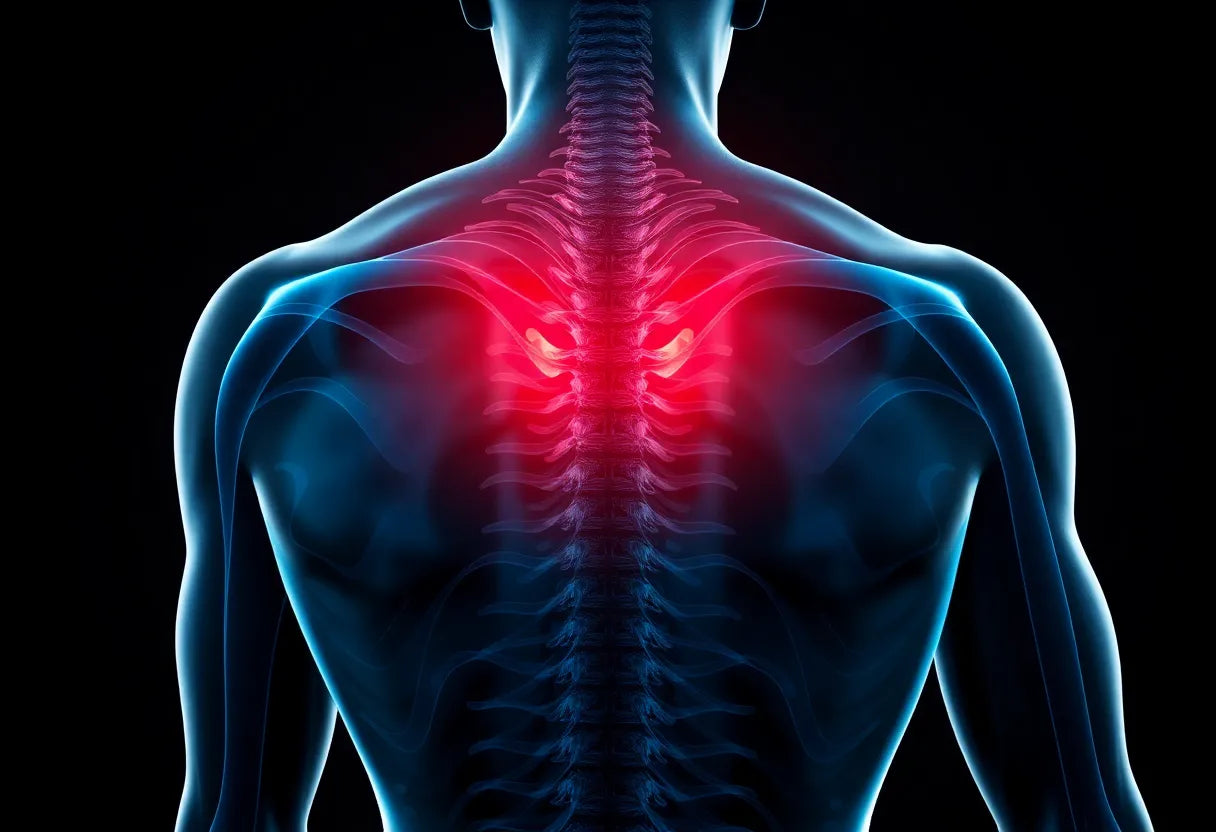When it comes to building a strong, pain-free body, the importance of glute strength cannot be overstated. The glute muscles, comprising the gluteus maximus, medius, and minimus, play a crucial role in maintaining posture, supporting the lower back, and enhancing overall mobility. Strong glutes are not just about aesthetics; they are vital for functional movement and can significantly reduce the risk of lower back pain.
The gluteus maximus is the largest muscle in the body and is primarily responsible for hip extension, outward rotation, and the backward movement of the legs. The gluteus medius and minimus, on the other hand, are essential for stabilizing the pelvis and maintaining proper alignment during movement. Together, these muscles support the spine and facilitate a range of activities, from walking to lifting heavy objects.
Why strong glutes matter
In today's sedentary lifestyle, many individuals suffer from a condition known as "gluteal amnesia," where the glute muscles become inactive or underutilized. This often results from prolonged sitting, which can lead to weak glutes and, consequently, poor posture and increased pain, especially in the lower back. For desk workers, this can be particularly problematic, as sitting for extended periods can exacerbate these issues.

Lumbar support belt
Adjustable lumbar belt combats lower back pain by supporting and stabilizing the lumbar region.
Engaging in regular glute exercises offers dual benefits: alleviating pain and enhancing strength. By activating and strengthening these muscles, you can improve your posture, reduce discomfort, and increase your overall strength and mobility. This is especially important for athletes and fitness enthusiasts who rely on strong glutes for optimal performance.
The science behind effective glute exercises
To maximize the benefits of glute exercises, it's essential to understand the science behind them. Electromyography (EMG) studies have been instrumental in identifying exercises that effectively activate the glute muscles. These studies measure the electrical activity of muscles during exercise, helping to pinpoint which movements are most effective for glute engagement.
Targeting different parts of the glute complex is crucial for comprehensive strengthening. Exercises like hip thrusts, walking lunges, and step-ups have been shown to generate high levels of glute activation. By incorporating a variety of exercises that focus on different aspects of the glutes, you can ensure balanced muscle development and improved functionality.
In the following sections, we will delve into specific exercises designed to target each part of the glute complex. These exercises not only promote strength but also aid in pain relief, making them an essential component of any fitness routine. Whether you're looking to enhance your athletic performance or simply alleviate discomfort, these glute exercises offer a practical solution for achieving your goals.
hip thrusts: a powerhouse for glute activation
One of the most effective exercises for targeting the gluteus maximus is the hip thrust. This exercise has garnered attention for its superior ability to activate the largest muscle of the glute complex, often outperforming traditional squats in EMG studies. Here's how to perform this exercise with precision:
- Setup: Sit on the ground with your upper back resting against a bench, feet flat on the floor, and knees bent. Position a barbell over your hips for added resistance, if desired.
- Movement: Drive through your heels to lift your hips towards the ceiling, ensuring your shoulders and upper back remain on the bench. Squeeze your glutes at the top of the movement.
- Form Tips: Keep your chin tucked and core engaged throughout the exercise to prevent arching your back.
For progression, consider variations such as the American-style hip thrust, which involves a shorter range of motion, or the single-leg hip thrust to challenge your balance and unilateral strength.
walking lunges: dynamic stability and strength
Walking lunges are a compound movement that effectively engages all three glute muscles, promoting stability and strength. Here's how to execute them correctly:
- Execution: Stand tall with feet hip-width apart. Step forward with one leg, lowering your hips until both knees are bent at a 90-degree angle. Push off the front foot to return to the starting position and repeat on the other side.
- Posture: Maintain an upright torso and ensure your front knee doesn't extend beyond your toes.
- Knee Alignment: Keep your knees aligned with your toes to prevent injury.
To increase intensity, add weights or extend your stride length. This not only enhances muscle engagement but also improves your balance and coordination.
step-ups: elevating glute engagement
Step-ups are another excellent exercise for activating the glutes, particularly beneficial for enhancing stability and functional strength. Here's how to perform them:
- How to Do It: Stand in front of a bench or step. Place one foot on the step, then press through your heel to lift your body up, bringing the other foot to meet the first. Step back down and repeat with the opposite leg.
- Form Focus: Ensure your entire foot is on the step to maximize glute activation and maintain stability.
For variety, try lateral step-ups to engage different muscle angles or crossover step-ups to challenge your coordination.
split squats: building unilateral strength
Split squats are an effective exercise for enhancing unilateral strength and balance, targeting the glutes and lower body. Here's a guide to performing split squats:
- Setup: Position one foot forward and the other back, ensuring both feet are hip-width apart. Lower your back knee towards the ground while keeping your front knee aligned with your ankle.
- Execution: Push through the front heel to return to the starting position, focusing on engaging the glutes.
- Common Mistakes: Avoid letting your front knee collapse inward and ensure your torso remains upright.
Incorporating these exercises into your routine can significantly enhance glute strength and stability. By focusing on proper form and progression, you can maximize the benefits and achieve a stronger, pain-free body.
machine hip abduction: targeting the upper glutes
The machine hip abduction exercise is a valuable addition to any glute workout routine, especially for targeting the upper glutes or gluteus medius. This exercise is particularly effective when performed with a slight forward lean of about 30 degrees, which enhances the activation of the upper glute muscles. Here's how to perform it correctly:
- How to Do It: Sit on the hip abduction machine with your back straight and feet positioned on the footrests. Lean slightly forward and push your knees outward against the resistance pads.
- Form Tips: Maintain a firm grip on the machine handles, and avoid leaning too far forward or backward to keep the focus on your glutes.
- Repetition Guidelines: Aim for 15-20 repetitions per set to effectively engage the upper glutes.
curtsy lunge: enhancing hip stabilization
The curtsy lunge is a dynamic exercise that emphasizes the gluteus medius and minimus through a crossover motion, which also enhances hip stabilization. Here's a step-by-step guide to performing curtsy lunges:
- How to Do It: Stand with feet hip-width apart. Step one leg diagonally behind the other, bending both knees as if performing a curtsy. Push through the front heel to return to the starting position and repeat on the other side.
- Form Tips: Keep your chest lifted and core engaged to maintain balance throughout the movement.
- Additional Benefits: This exercise not only targets the glutes but also improves coordination and balance.
fire hydrant: effective hip abduction
The fire hydrant exercise is a simple yet effective movement for enhancing hip abduction and frontal plane control. It's particularly beneficial for targeting the gluteus medius. Here's how to execute it:
- How to Do It: Begin on all fours with your hands under your shoulders and knees under your hips. Lift one leg out to the side, keeping the knee bent at a 90-degree angle. Lower it back down and repeat.
- Form Tips: Avoid rotating your hips or arching your back during the lift to ensure the focus remains on the glutes.
- Progression Options: Add resistance bands around your thighs for an added challenge.
frequently asked questions
Why are strong glutes important for pain relief?
Strong glutes help stabilize the pelvis and support the spine, reducing strain on the lower back. This can alleviate pain and improve posture, particularly for those who sit for prolonged periods.

Men's Posture Shirt™ - White
Patented posture shirt activates muscles and reduces pain in the neck, shoulders, and back.
How often should I perform glute exercises?
For optimal results, incorporate glute exercises into your routine 2-3 times per week, allowing for rest days in between to ensure muscle recovery and growth.
Can I do these exercises without equipment?
Yes, many glute exercises can be performed using body weight alone. Variations like the fire hydrant and curtsy lunge require minimal to no equipment, making them accessible for home workouts.
What are common mistakes to avoid during glute exercises?
Common mistakes include improper alignment, such as letting the knees collapse inward, and not engaging the core. Maintaining proper form is crucial for maximizing effectiveness and preventing injury.
How long will it take to see results?
With consistent practice and proper nutrition, you may begin to notice improvements in strength and pain relief within 4-6 weeks. Results can vary based on individual fitness levels and goals.
Källor
- Reiman, M. P., & Manske, R. C. (2020). "The Assessment of Function in the Human Body." Journal of Sports Science & Medicine.
- Elevate Physical Therapy and Fitness. "Top Glute Exercises for Strength and Stability."
- Schoenfeld, B. J. (2018). "Program Design Considerations for Optimal Hypertrophy: Glute Muscles." NSCA Personal Training Quarterly.
- BarBend. "Jeff Nippard's Best Glute Exercises for Strength and Growth."
- Contreras, B., et al. (2020). "The Biomechanics of Gluteal Exercises." Sports Medicine.
- Built With Science. "The Best Glute Exercises Backed by Science."


















